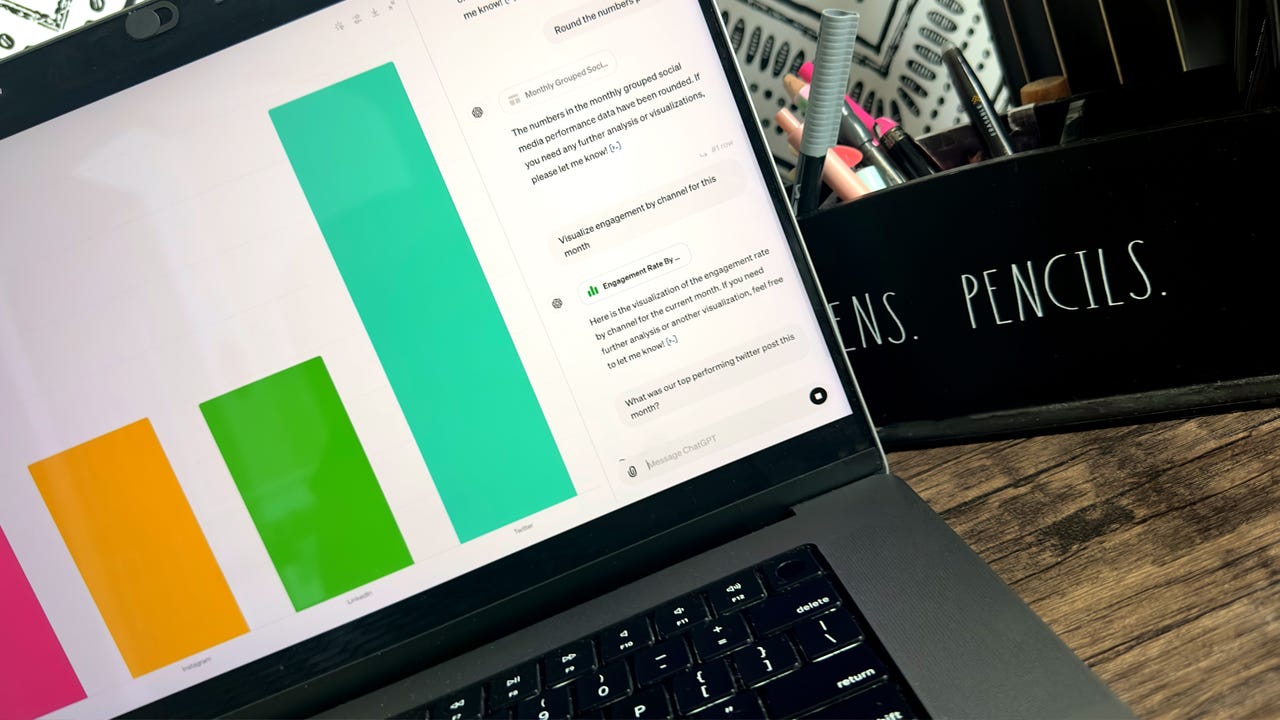ChatGPT will put your data into interactive tables and charts with GPT-4o

OpenAI just announced new changes to ChatGPT's data analysis feature. Users can now create customizable, interactive tables and charts with the AI chatbot's help that they can later download for presentations and documents. They can also upload files to ChatGPT from Google Drive and Microsoft OneDrive.
However, not all ChatGPT users will gain access to the new data analysis features. The upgrade will roll out for ChatGPT Plus, Team, and Enterprise users over the coming weeks. The new data analysis capabilities will be available in GPT-4o, OpenAI's new flagship model recently released as part of the company's Spring Update.
Also: ChatGPT vs. ChatGPT Plus: Is a paid subscription still worth it?
With the data analysis improvements, users can upload datasets, including tables and documents, and have ChatGPT create an interactive table. They will see the information in an expandable view, edit and customize it, and click on certain areas to ask follow-up questions.
"ChatGPT walks me through data analysis and helps me better understand insights," said Lauren Nowak, marketing manager at Afterpay. "It makes my job more fulfilling, helps me learn, and frees up my time to focus on more strategic parts of my job."
ChatGPT users will also be able to customize and interact with bar, line, pie, and scatter plot charts and download them for presentations.
Also: How to use ChatGPT (and how to access GPT-4o)
A user can upload a spreadsheet and ask the AI chatbot to create a chart on a specific statistic. Once the chart is created, they can hover over chart elements to ask ChatGPT additional questions or select colors.
OpenAI described GPT-4o as a much faster model than GPT-4, with improved text, vision, and audio capabilities. The model will be available for free and paid users in 50 languages, although the interactive tables will only be available to paying users.
